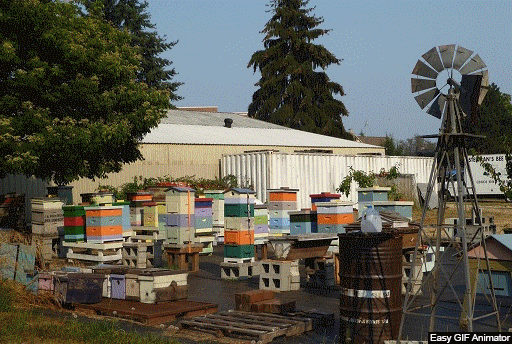Top-Bar or Kenya-Hives




We currently have one custom built Top Bar hive at the club apiary and several members using this style of hive.
The advantage to this style of hive is it that it utilizes natural comb and needs less routine maintain.
The disadvantage is that they require building skills and because they are natural comb the frames require more delicate care when handling.
The top-bar or Kenya-hives were developed as a lower-cost alternative to the standard Langstroth hives and equipment. They are becoming very popular in the US due to their alignment with the organic, treatment-free philosophies of many new beekeeping devotees in the United States. They are also popular, owing to their simplicity and low cost, in developing countries. Top-bar hives have movable comb and make use of the concept of bee space.
The top-bar hive is so named because the bees draw their comb from a top bar, suspended across the top of a cavity, and not inside a full rectangular frame with sides and a bottom bar. The beekeeper does not provide foundation wax (or provides only a small starter piece of foundation) for the bees to build from. The bees build the comb so it hangs down from the top bar. This is in keeping with the way bees build wax in a natural cavity. There is some belief that the use of natural wax in a top-bar hive supports the bees' natural systems in ways that improve their health.
The hive body of a common style of top-bar hive is often shaped as an inverted trapezoid in order to reduce the tendency of bees to attach the comb to the hive-body walls, though this reasoning has become less popular recently. It may be more likely that the trapezoid shape helps to improve the ratio of the weight of the comb to the amount of attachment at the bar and helps to lessen the likelihood of heavy combs detaching from the top bar when being handled or harvested.
Unlike the Langstroth design, this style of top-bar hive is expanded horizontally, not vertically. The top-bar design is a single, much longer box, with the bars hanging in parallel. This common style is sometimes referred to as a horizontal Top Bar hive, or hTBH. Most horizontal top bar hives in the UK are based on the tandem-follower system designed by Phil Chandler.
Some top bar hives do stack vertically, much like the Langstroth, National, or other frame hives, although vertical designs use bars with gaps between them, unlike the adjacent bars of the horizontal design. Vertical top bar hives have been largely unknown in the United States until about 2010. This is largely due to the work by Dr David Heaf, who, along with wife Patricia, translated a book by Abbé Emile Warré (~1852) from French and implemented some hives in Wales, UK, in 2007. These are commonly referred to as Warré Hives, but the abbé named them, "The People's Hive," for their intended economy and simplicity of construction.
Unlike the Langstroth hive, the honey is usually extracted by crushing and straining rather than centrifuging because a top bar does not have wire reinforcement. There is a laterally oriented extractor available, made by Swienty, but these are not overly popular in the US.[citation needed] Because the bees have to rebuild their comb after honey is harvested, a top-bar hive yields a beeswax harvest in addition to honey.
However, like the Langstroth hive, the bees will store most of their honey separately from the areas where they are raising the brood. For this reason, bees are not killed when harvesting from a top-bar hive, unlike the old practice of harvesting from a skep by driving bees out or killing them over a sulphur pit.
Source Wikipedia


